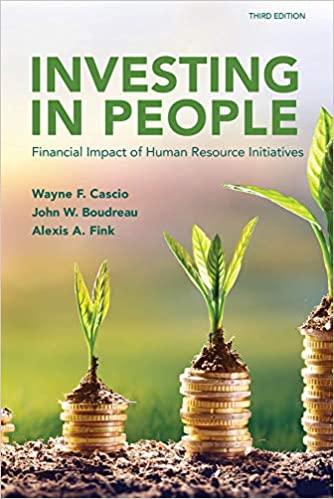Question
Ask ten people who believe themselves knowledgeable about critical thinking for a definition, and you will most likely receive ten differing responses. Browne and Keeley
Ask ten people who believe themselves knowledgeable about critical thinking for a definition, and you will most likely receive ten differing responses.
Browne and Keeley (1986) refer to critical thinking as filtering, separating the relevant from the irrelevant. Chaffee (1985) says that critical thinking is "making sense of our world by carefully examining our thinking and the thinking of others in order to clarify and improve our understanding@ (p.49). Others (Missimer, 1990; Kahane, 1992; Beardsley, 1975; Freeman, 1993) define critical thinking much more technically: understanding argument, recognizing fallacies, distinguishing premises from conclusions, and isolating salient issues from non-relevant information.
Brookfield (1987), long considered an "expert" on critical thinking, contends that critical thinking is a process. Although his definition includes emotional as well as rational components, and clearly acknowledges the importance of culture and context, it contains the following common characteristics:
Identifying and challenging assumptions.
Challenging the importance of context.
Trying to imagine and explore alternatives.
Reflective Skepticism.
Brookfield (1987) defines reflective skepticism as the act of constantly questioning the status quo. Just because something has been believed for years does not necessarily mean that it is true. Just because something has been done a certain way for years does not mean it is the only or best way to do it. Furthermore, just because someone of perceived importance says something is right, that does not prove that it is right. I like to call this the "maybe--maybe not" life stance.
Post your response to the following discussion question. There are many definitions for critical thinking and your readings introduce you to various concepts. However, what do you think it means to think critically?
Limit your response to 150 to 300 words, demonstrate understanding of and cite the required readings or other credible sources that you apply, and look for opportunities to engage with and learn from others.
Step by Step Solution
There are 3 Steps involved in it
Step: 1

Get Instant Access to Expert-Tailored Solutions
See step-by-step solutions with expert insights and AI powered tools for academic success
Step: 2

Step: 3

Ace Your Homework with AI
Get the answers you need in no time with our AI-driven, step-by-step assistance
Get Started


